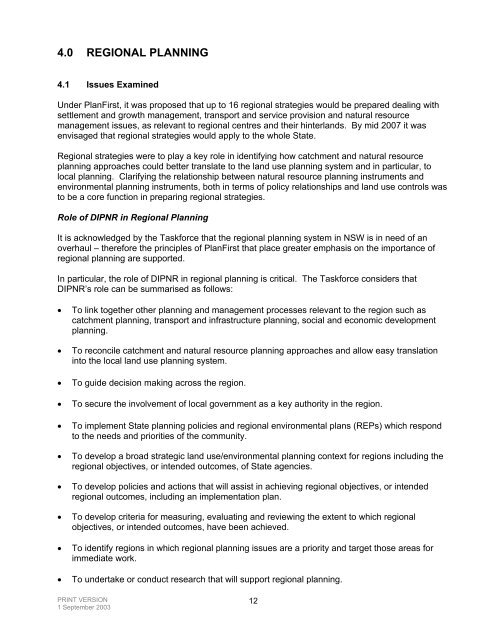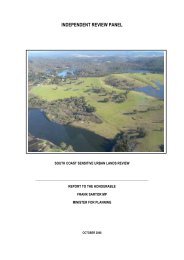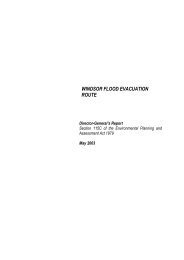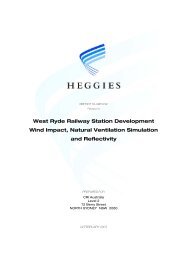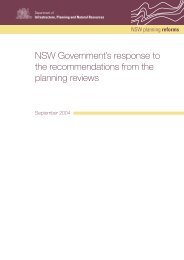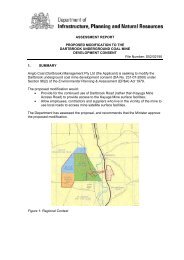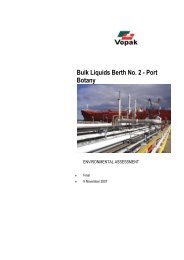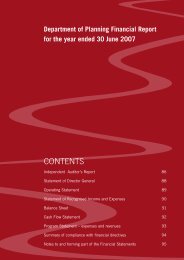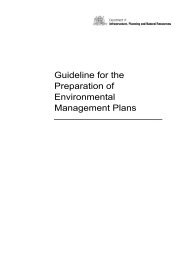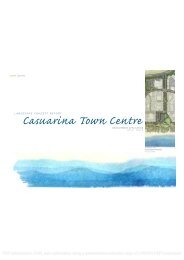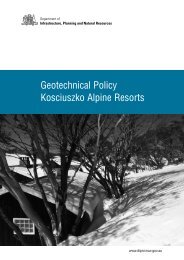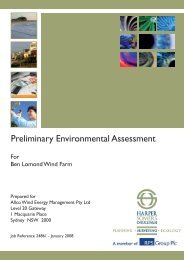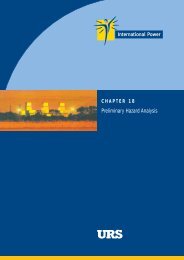Final Report PlanFirst Review Taskforce - Department of Planning
Final Report PlanFirst Review Taskforce - Department of Planning
Final Report PlanFirst Review Taskforce - Department of Planning
Create successful ePaper yourself
Turn your PDF publications into a flip-book with our unique Google optimized e-Paper software.
4.0 REGIONAL PLANNING<br />
4.1 Issues Examined<br />
Under <strong>PlanFirst</strong>, it was proposed that up to 16 regional strategies would be prepared dealing with<br />
settlement and growth management, transport and service provision and natural resource<br />
management issues, as relevant to regional centres and their hinterlands. By mid 2007 it was<br />
envisaged that regional strategies would apply to the whole State.<br />
Regional strategies were to play a key role in identifying how catchment and natural resource<br />
planning approaches could better translate to the land use planning system and in particular, to<br />
local planning. Clarifying the relationship between natural resource planning instruments and<br />
environmental planning instruments, both in terms <strong>of</strong> policy relationships and land use controls was<br />
to be a core function in preparing regional strategies.<br />
Role <strong>of</strong> DIPNR in Regional <strong>Planning</strong><br />
It is acknowledged by the <strong>Taskforce</strong> that the regional planning system in NSW is in need <strong>of</strong> an<br />
overhaul – therefore the principles <strong>of</strong> <strong>PlanFirst</strong> that place greater emphasis on the importance <strong>of</strong><br />
regional planning are supported.<br />
In particular, the role <strong>of</strong> DIPNR in regional planning is critical. The <strong>Taskforce</strong> considers that<br />
DIPNR’s role can be summarised as follows:<br />
•<br />
•<br />
•<br />
•<br />
•<br />
To link together other planning and management processes relevant to the region such as<br />
catchment planning, transport and infrastructure planning, social and economic development<br />
planning.<br />
• To reconcile catchment and natural resource planning approaches and allow easy translation<br />
into the local land use planning system.<br />
• To guide decision making across the region.<br />
• To secure the involvement <strong>of</strong> local government as a key authority in the region.<br />
To implement State planning policies and regional environmental plans (REPs) which respond<br />
to the needs and priorities <strong>of</strong> the community.<br />
To develop a broad strategic land use/environmental planning context for regions including the<br />
regional objectives, or intended outcomes, <strong>of</strong> State agencies.<br />
To develop policies and actions that will assist in achieving regional objectives, or intended<br />
regional outcomes, including an implementation plan.<br />
To develop criteria for measuring, evaluating and reviewing the extent to which regional<br />
objectives, or intended outcomes, have been achieved.<br />
• To identify regions in which regional planning issues are a priority and target those areas for<br />
immediate work.<br />
• To undertake or conduct research that will support regional planning.<br />
PRINT VERSION<br />
1 September 2003<br />
12


